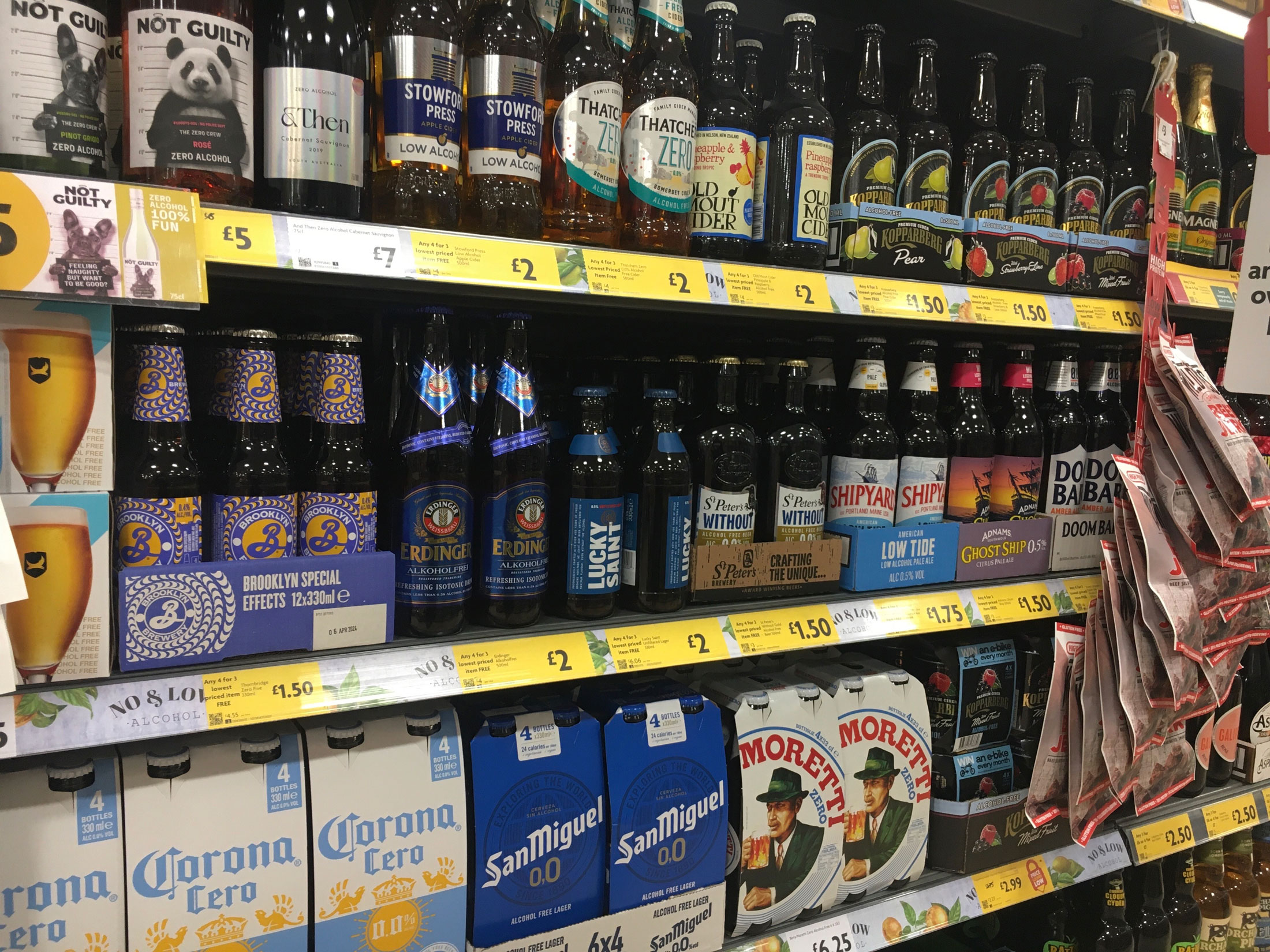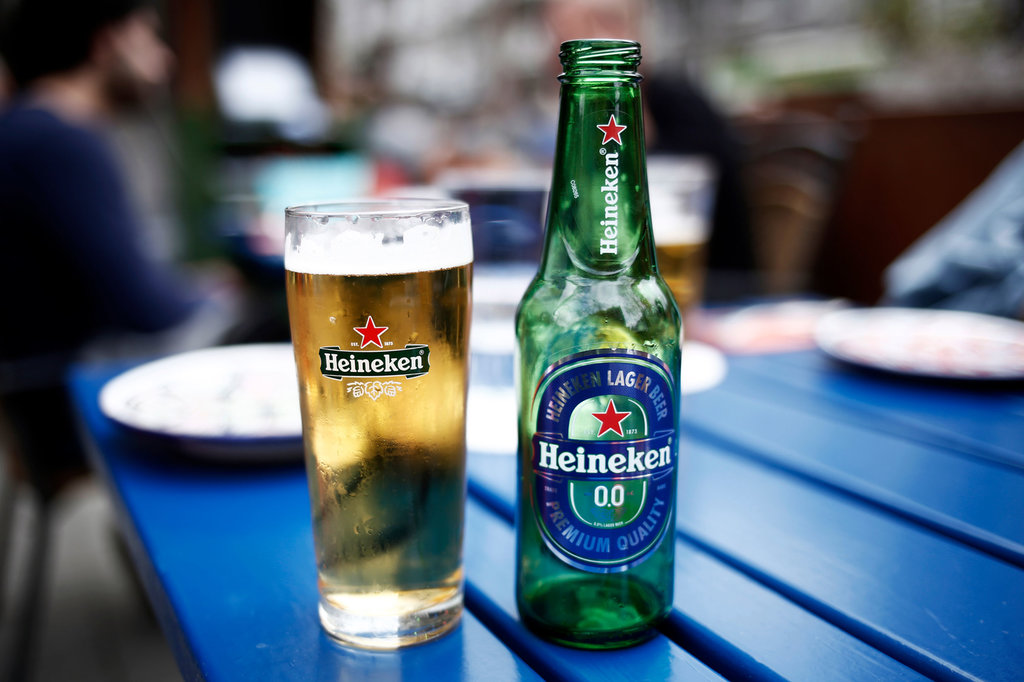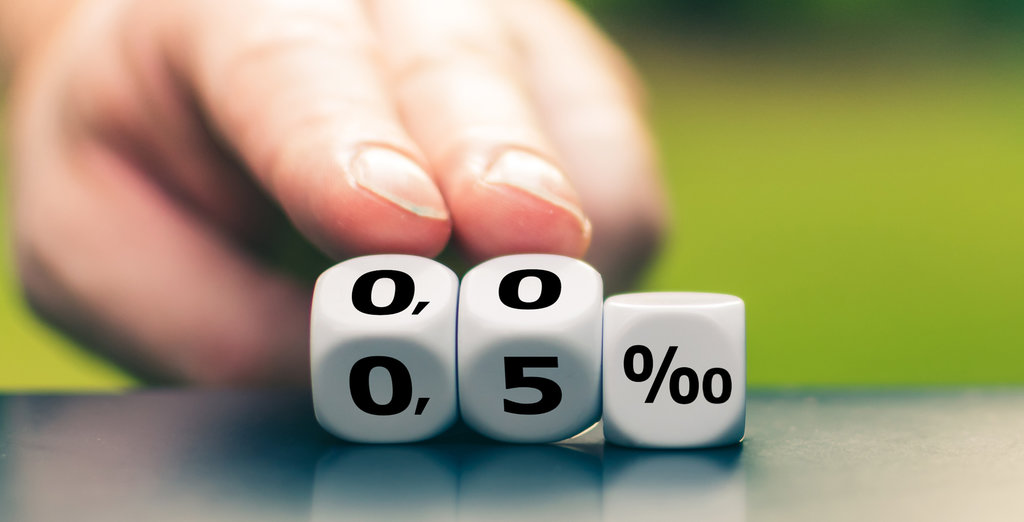Comment
Why the UK’s alcohol-free labelling review could have international impact
A potential shift in how alcohol-free drinks in the UK are labelled could have a significant influence on the fledgling industry globally, writes Chris Losh.

Alcohol-free beer and cider on sale in Morrisons in Sidcup, United Kingdom, 5 October 2023. Credit: Just Drinks
The UK’s review of the threshold at which a drink is labelled as “alcohol-free” looks at first like the very definition of a niche story; an arcane piece of potential legislation in a tiny drinks category, affecting one country.
This, though, is far from the case. The UK is calling for feedback on lifting the bar for a drink to be “alcohol-free” from 0.05% abv to 0.5% - and rarely has domestic consultation on moving a decimal point one place seemed so significant.
True, alcohol-free remains a small category but it’s growing at a pace at which traditional alcoholic drinks can only dream. Heineken is planning for alcohol-free to be 10% of its sales. At present, the Dutch brewer estimates alcohol-free products account for 2% of the global beer market. Last year, AB InBev said it hopes Bud Zero will get to that level by 2025.
As for the UK, it’s a market that punches above its weight in alcohol-free. It’s home to competitions, influencers, importers, retailers – and a disproportionately high number of producers.
Within this fizzing energy, the existing recommended definitions – where the ceiling for ‘alcohol-free’ was just 0.05% and anything below 1.2% was simply ‘low alcohol’ – had looked increasingly out of step.
Key figures in the alcohol-free category have been lobbying for a change that would, as they see it, be a better fit for the drinks that are being made now, and the people who are looking to drink them.
Many other countries around the world already allow more freedom over this.
Neil O’Brien, UK public health minister
And it seems that this message has hit home. “Many other countries around the world already allow more freedom over this,” UK public health minister Neil O’Brien said. “Liberalising labelling guidelines could help people make more informed choices about the drinks they buy.”
But while the UK government, alcohol-free producers and health bodies are in lockstep over the end goal of encouraging people to switch alcoholic drinks for non-alcoholic, there has been less unanimity over the small print. And the labelling of 0.5% drinks in the UK was becoming something of a battleground.
Health group Alcohol Change UK is in favour of promoting consumption of lower-alcohol drinks, for obvious reasons. But it has been lobbying for a different approach to labelling. Few would take issue with its point that products labelled “zero” should be reserved for drinks that are fully 0.0%.
But it also favours retaining the term “alcohol-free” for drinks with only a micro-trace of alcohol – below 0.05% – and introducing a third descriptor – ‘ultra- or super-low alcohol’ for drinks at or below 0.5%, with ‘low alcohol’ retained for under 1.2%.
Dr Richard Piper, CEO of Alcohol-Change UK believes that these would be “clear” and “further strengthen public confidence in the sector”.
The majority of alcohol-free producers and retailers, however, are not convinced. For starters, they say, most consumers barely understand the concept of abv levels. Market research group Toluna recently found that 20% of consumers thought that wine had an abv level of 5%. Given this level of ignorance, having four descriptors for drinks under 1.2% abv seems inordinately complicated.
The fact that days drinking “ultra-low” drinks would still be considered ‘dry’ days would, almost certainly, confuse things further.
Interestingly, when it comes to the question of raising the level of alcohol-free to 0.5% the big drinks companies have been mostly either silent or against the move.

Credit: Alexandros Michailidis / Shutterstock.com
A spokesperson for Diageo said: “We believe alcohol free should be just that, so we don’t agree that the threshold should be increased to 0.5% abv. Doing so would only add further confusion to consumers who don’t want an alcoholic drink.”
It’s highly unusual for the drinks world to find itself on the same side as health lobbyists, and some smaller players have seen this as an attempt by ‘big alc’ to use their deeper pockets to muscle them out.
While it’s possible to manipulate brewing techniques to make a beer to 0.5%, 0.0% brews require de-alcoholisation, and that equipment is immensely expensive. If companies that could not afford it were only able to make products labelled ‘ultra-low alcohol’ they would be at a clear disadvantage. ‘Alcohol-free’ is a far more attractive term to moderating consumers.
International inconsistency
So, seeing the UK government positively considering raising the threshold has felt like a big win, not least because national governments are not always acting consistently – or logically – in this area.
In the Netherlands, the ‘alcohol-free’ cut off for beer is one of the lowest in Europe, at 0.1% (perhaps not uncoincidentally the home of Heineken, don’t forget).
But the image of the Dutch government as responsibly nudging its population towards a glorious non-alc future is somewhat undermined by the fact that, as of January, the taxes on alcohol-free drinks (other than mineral water) will be increased threefold, from €8.83 a hectolitre ($9.30 a hectolitre), to €26.13/hl.
“There’s no alcohol-free lobby in the Netherlands,” sighs Marielle Timmermans of online “alcohol-free boutique” Amavine. “They want to encourage healthier drinks, but for the government that’s only water.”

If that sounds paradoxical, even confusing, it is. Within the EU, there are multiple classifications for “alcohol-free”, from 0.05% in the UK to 2.8% in Finland. In Italy it’s 1.2%, Spain 1.0%.
“Low alcohol” is often not categorised at all but can (currently) be as low as 0.6% in the UK and as high as 2.75% in Norway and a whopping 3.7% in Finland. This is a young part of the drinks’ world and legislators are struggling to catch up or reach a consensus.
That said, most countries have drawn the line at 0.5% abv – and, where they haven’t, producers and the public are making that decision for them.
In France, alcohol-free retailer, Jerome Cuny of La Cave Parallele says that even though the official cut-off for alcohol-free products domestically is 1% abv, most producers make their drinks to 0.5% “because they want to export”. Cuny’s customers, he says, all want drinks at or below 0.5%.
All of which is why the potential shift in the UK is so significant. Changing existing recommendations would send a strong signal. If the UK ends up nudging its “alcohol-free” cut-off upwards, there’s a possibility that other countries (such as France, Spain and Italy) might lower theirs.
Frederic Chouquet-Stringer, a wine consultant and agent specialising in alcohol-free wine, says a move towards such consistency would set “a good example for the EU”. But legislators in Canada (where alc-free is <0.4%) and Japan (1%) might be watching closely, too. More global unanimity in this area would make trade significantly easier.
I do not see [the US government] changing their definitions any time soon as it has legal and excise tax implications.
Ed Carino, co-founder of ProofNoMore
Of course, this being the drinks world, it isn’t quite that simple. In the US, 0.5% is known as “non-alcoholic”, not alcohol-free. In fact, a couple of years ago a Louisiana woman took Heineken to court over the fact that their “alcohol-free beer” contained 0.03% alcohol.
As Ed Carino, co-founder of specialist US non-alc distributor Proof No More says: “I do not see [the US government] changing their definitions any time soon as it has legal and excise tax implications.”
Global unanimity on the semantics, in other words, might be unattainable but a coalescence around the 0.5% abv level is not.
Legislation that brings one of this nascent category’s most influential players onto the same page as most of the rest of the world, could kick-start further convergence and add further energy to an already vibrant category.
Producers, importers and retailers everywhere would surely raise a glass to that – whether alcoholic or not.